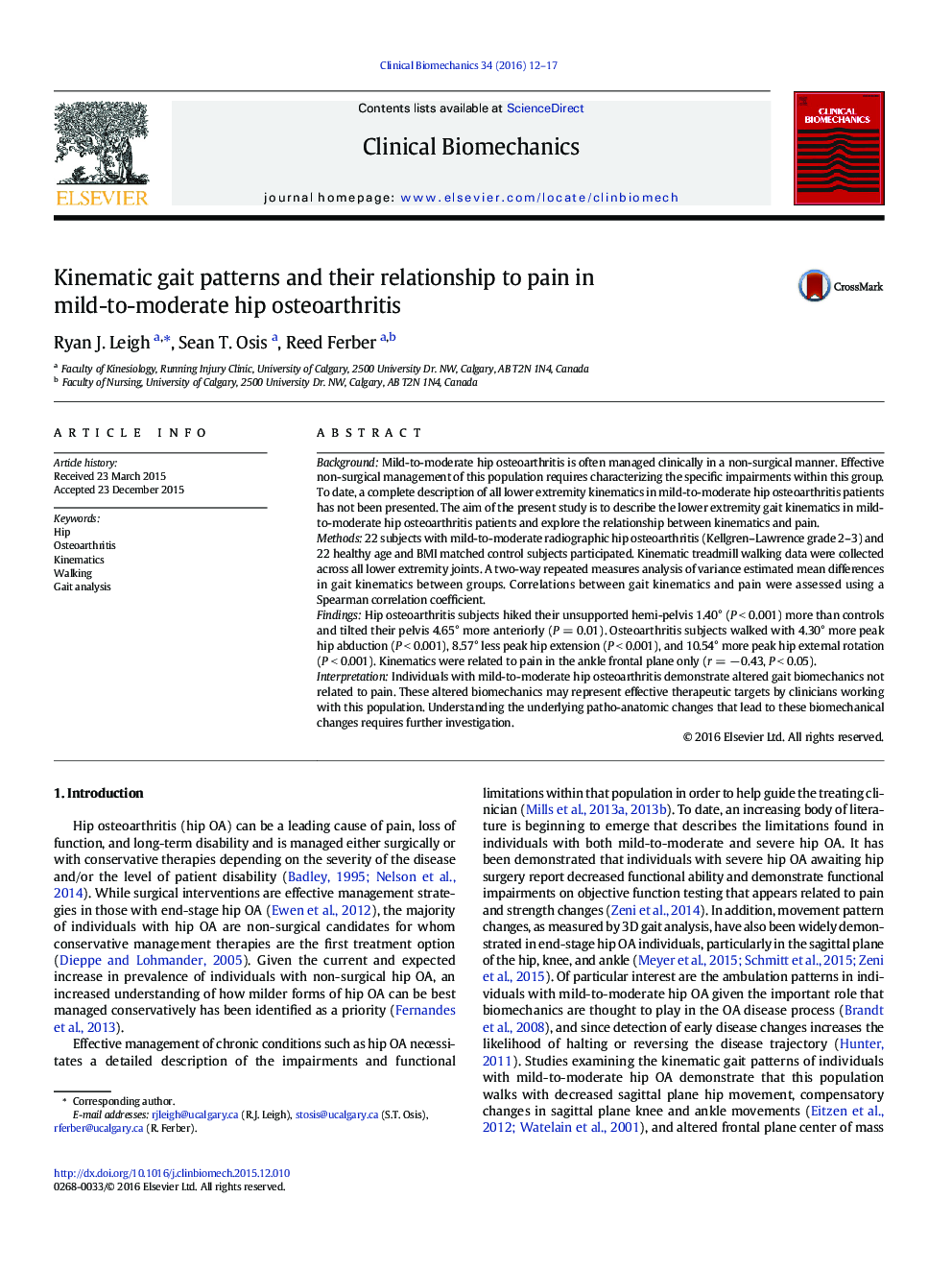| Article ID | Journal | Published Year | Pages | File Type |
|---|---|---|---|---|
| 4050149 | Clinical Biomechanics | 2016 | 6 Pages |
•We describe the gait kinematics of mild-to-moderate hip osteoarthritis patients.•We use an 8 camera 3D gait analysis system to describe this kinematics.•Gait kinematics is different between across all joints and planes in hip osteoarthritis subjects and controls OA.•There does not appear to be a relationship between pain and kinematics.•We believe these results can potentially aid clinicians working with patients with hip osteoarthritis OA patients.
BackgroundMild-to-moderate hip osteoarthritis is often managed clinically in a non-surgical manner. Effective non-surgical management of this population requires characterizing the specific impairments within this group. To date, a complete description of all lower extremity kinematics in mild-to-moderate hip osteoarthritis patients has not been presented. The aim of the present study is to describe the lower extremity gait kinematics in mild-to-moderate hip osteoarthritis patients and explore the relationship between kinematics and pain.Methods22 subjects with mild-to-moderate radiographic hip osteoarthritis (Kellgren–Lawrence grade 2–3) and 22 healthy age and BMI matched control subjects participated. Kinematic treadmill walking data were collected across all lower extremity joints. A two-way repeated measures analysis of variance estimated mean differences in gait kinematics between groups. Correlations between gait kinematics and pain were assessed using a Spearman correlation coefficient.FindingsHip osteoarthritis subjects hiked their unsupported hemi-pelvis 1.40° (P < 0.001) more than controls and tilted their pelvis 4.65° more anteriorly (P = 0.01). Osteoarthritis subjects walked with 4.30° more peak hip abduction (P < 0.001), 8.57° less peak hip extension (P < 0.001), and 10.54° more peak hip external rotation (P < 0.001). Kinematics were related to pain in the ankle frontal plane only (r = − 0.43, P < 0.05).InterpretationIndividuals with mild-to-moderate hip osteoarthritis demonstrate altered gait biomechanics not related to pain. These altered biomechanics may represent effective therapeutic targets by clinicians working with this population. Understanding the underlying patho-anatomic changes that lead to these biomechanical changes requires further investigation.
